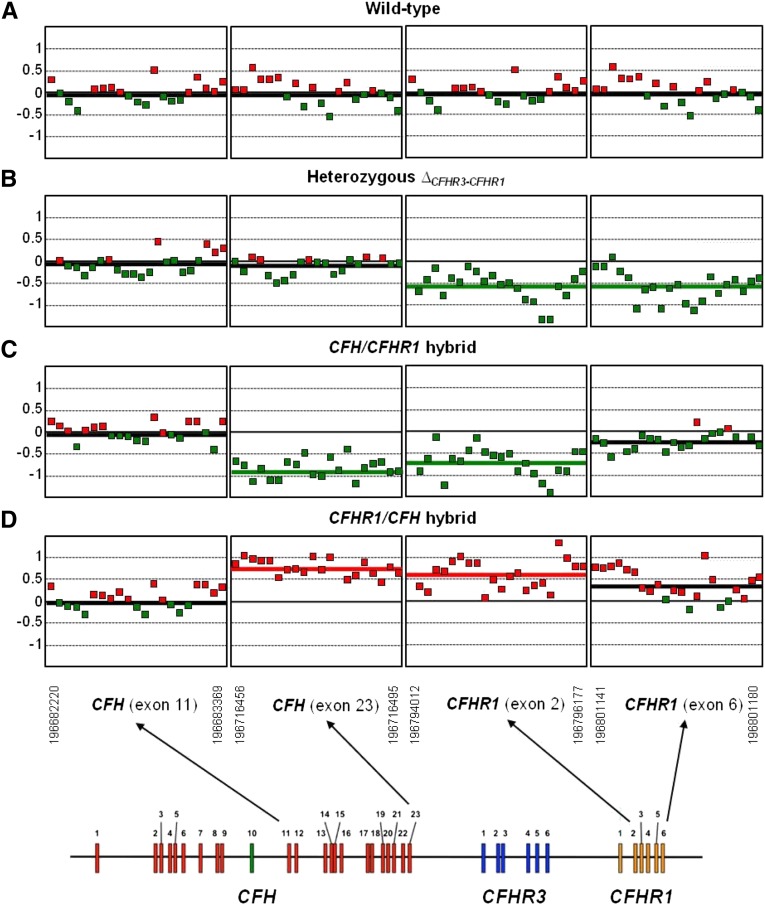Figure 3.
CGH array analysis confirms the presence of the CFHR1/CFH hybrid gene. DNAs from four different individuals are compared: (A) a wild-type individual (carrying two copies of CFH, CFHR3, and CFHR1), (B) an individual heterozygous for the CFHR3-CFHR1 deletion, (C) a carrier in heterozygosis of the CFH/CFHR1 hybrid gene, and (D) the proband in this study carrying in heterozygosis the new CFHR1/CFH hybrid gene. As indicated in the diagram at the bottom, only the fragments of the array corresponding to CFH exon 11, CFH exon 23, CFHR1 exon 2, and CFHR1 exon 6 are shown. A thick colored line within each fragment indicates the average DNA gain (red) or loss (green). Notice that, in the carrier of the CFHR1/CFH hybrid gene, CFH exon 23 and CFHR1 exon 2 are overrepresented, confirming the heterozygous duplication in this region. For comparison, the reverse situation occurs in the carrier of the CFH/CFHR1 hybrid gene.

